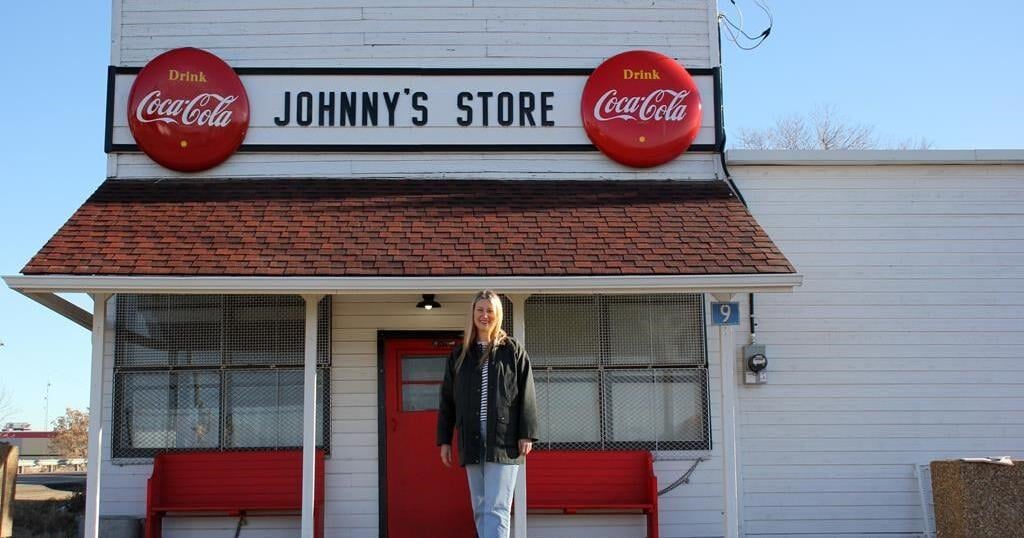NAMAO, Alta. – It’s a brisk, bright autumn morning when Julie-Ann McNeilly comes barrelling down a dirt road, steps out of her van and dives deep into the history of Johnny’s Store.
Built in 1902, the shop is believed to be one of the oldest in Alberta and has long served as a gathering spot in the hamlet of Namao, just north of Edmonton. At one time, it also housed a post office, and McNeilly’s grandmother worked as one of Alberta’s first postmistresses.
Its ownership changed hands a few times, she says. Her family took possession in the 1930s, after her great-uncle became shopkeeper.
“My grandpa bought it in 1949 and his name is John, so it became Johnny’s Store,” she says. “We decided to leave the name, because everyone knows it as Johnny’s Store.”
McNeilly and her brother Brendan have spent hundreds of hours bringing new life to the shop. It’s been closed since 2018, after briefly serving as a craft market, and is set to reopen by Nov. 28.
The space is to offer general store essentials, a coffee shop and a bar.
Inspiration came after McNeilly’s father died in 2020. It had been on the market for a time, but selling the store didn’t feel right, even after an offer was made.
“We were raised coming into the store and getting an ice cream and seeing our family be a part of the community,” she says. “It was very important to us to keep that legacy going.”
McNeilly says she and her brother have done extensive updates to honour the store’s history while bringing in modern amenities. Peeling back crinkled wallpaper revealed early 1900s barn board. Antique decor lines the walls. Remnants of knob-and-tube electrical wiring hang from the ceiling.
Even the floors slope down.
McNeilly has added a coffee nook at a bay window with bistro tables and bench seats. In the back, a new bar has Johnny’s own light lager on tap.
Indoor plumbing is also a new addition that the pair is slowly adapting to, McNeilly says.
“My brother still runs to the back (outside) to go to the bathroom.”
McNeilly says Johnny’s design is a product of its time, which is why the storefront — with its white facade and round Coca-Cola signs — has been featured in several movies and TV shows.
American actor Kathy Bates directed scenes from the 2003 TV movie “Fargo” at the store. The Canadian series “Blackstone” was also filmed there for a time.
One day, a couple friends texted McNeilly to tell her they saw the store in a Netflix movie.
“It was a Liam Hemsworth movie called ‘Cut Bank’ with Billy Bob Thornton,” she says, referring to the 2014 crime drama.
“Liam Hemsworth drives in front of the store, runs to a fake phone booth outside, takes a call and speeds off again. So there’s things that the store has been in that I didn’t even know about.”
With no outside help, restoring Johnny’s to its former glory has been a labour of love, McNeilly says. It’s also been a homecoming of sorts. McNeilly left Edmonton about 20 years ago but came back for the project.
It’s also made McNeilly feel closer to her brother.
“There’s not been a day where my brother and I haven’t loved coming here,” she says.
“It just all has really come together and feels really special.”
This report by The Canadian Press was first published Nov. 16, 2024.
